2016 | Forum Expanded
The Magic of the Phantasm
The theme of the 11th Forum Expanded is “Traversing the Phantasm”. In this interview, head of section Stefanie Schulte Strathaus and co-curator Ulrich Ziemons discuss the creative power of working your way through something, narrative terrorists and a cinema experience entirely without images.
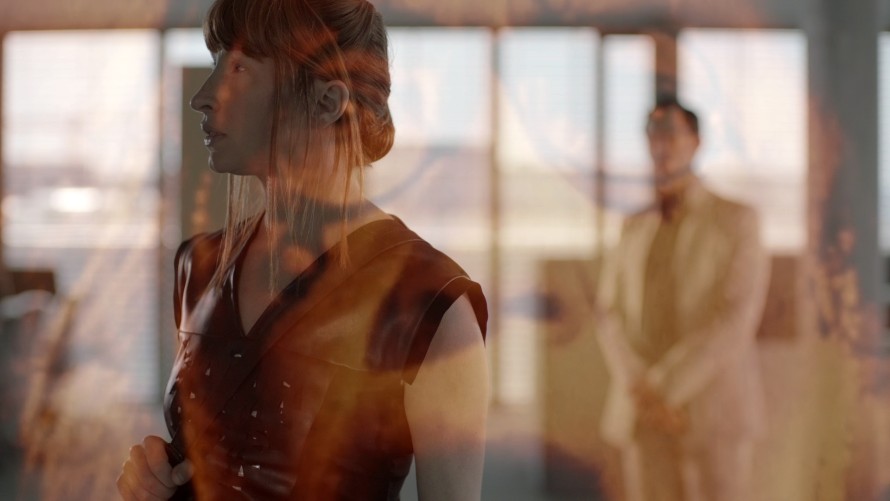
ESIOD 2015 by Clemens von Wedemeyer
“Traversing the Phantasm” is the title of the group exhibition and this year’s theme. How did you arrive at the French psychoanalyst Jacques Lacan?
SSS: Following last year’s tenth anniversary, we reflected on Forum Expanded and ascertained that opening up to and taking in something new is a central factor – whether it be fine art in a film festival, meaning not just installations but also new discourses and perspectives, or films from parts of the world which do not correspond to the concept of experimental film as shaped by the West. We want the works to have a lasting effect on us in the institutional framework within which we move. And so we arrived at Lacan and the concept of the phantasm which encompasses both the imaginary and the real. The phantasm is not tangible, you can only work your way through it in order to then end up somewhere else.
With this perspective, we began to look at the submissions and work our way through them. We often proceed in this manner. We find a theme which forms the common thread running through the discussions in our selection process. The works in this year’s programme have found very individual modes of expression, research tools and aesthetic forms with which to work through their individual topics in the Lacanian sense. This is what lies behind the “Traversing the Phantasm” title: the invitation to be open to the particular moment, to immerse yourself in the processes of perception and thought and to allow yourself to be changed, beyond the representation and conformity of what is required of art. I regard this as an act of liberation for the viewer. The filmmakers and artists utilise this in their work.
To what extent does Anton Vidokle’s The Communist Revolution Was Caused By The Sun grapple with phantasms?
UZ: We already screened a film by Anton Vidokle last year. At the moment, he is focusing on Russian cosmism. One of the proponents of this school of thought who is preoccupied with the effect of solar activity on human behaviour is at the centre of his new film. An incredible technical device is shown which functions like a parabolic antenna. It was developed to collect solar radiation and make it utilisable. This is of course also about invisibleness and phantasms. Which forces operate within and influence the cosmos and how do they correlate with wars and famine?
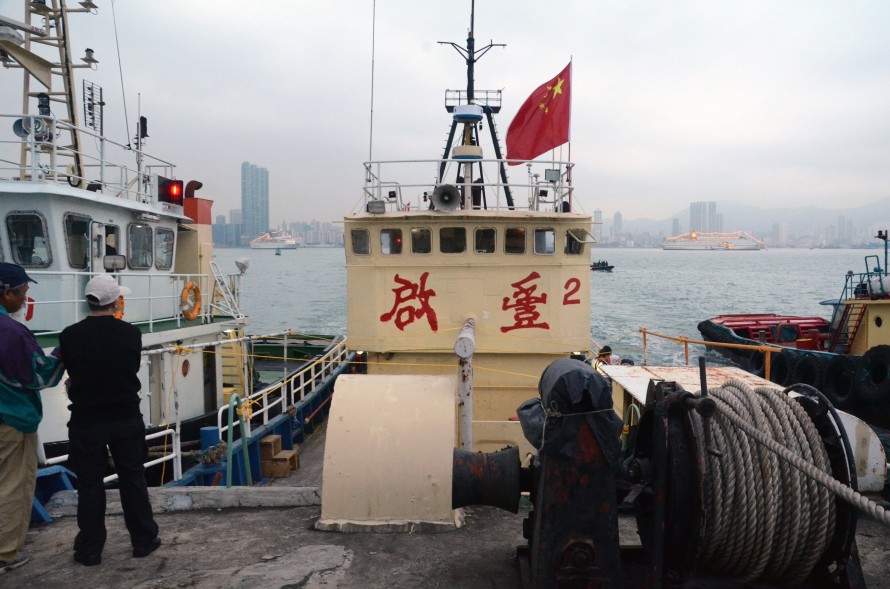
Part of the exhibition "Traversing the Phantasm": Terra Nullius or: How to be a Nationalist by James T. Hong
In geopolitical terms, the phantasm currently experiencing a strong revival is the nation state. Is this visible in the 2016 works?
SSS: Many of the works deal with this very intensively. James T Hong explicitly addresses this subject matter in Terra Nullius or: How to be a Nationalist. It is about the Senkaku Islands in the East China Sea which are claimed by Japan, Taiwan and China. The conflict dates from time immemorial and has in the meantime been reduced to purely nationalistic stances which mean there is no longer any rational reasoning.
In The Illinois Parables, Deborah Stratmann works through the history of this American state and, in eleven parables, singles out moments in its local history which shed light on the phantasms deriving from the idea of a nation state and reveal their absurdity.
UZ: The examinations of ideology and mythology run in various directions. Some works pursue these issues historically. For example, Abu Ammar is Coming, Naeem Mohaiemen’s work about the solidarity uniting freedom fighters in Bangladesh and the PLO. Legend has it that combatants from Bangladesh fought on the PLO’s side in Lebanon. With the aid of a photo, Mohaiemen tries to establish the verisimilitude of this legend.
Bunker Drama by Mike Crane shows the slaving away on one’s own national history. In Lithuania, an actor puts on history shows in a former Soviet bunker. People sent there include unemployed youths, courtesy of EU funding. They go through a simulated Soviet military training to make them fit for the job market – complete with a yelling Red Army general and a strongly biased image of Soviet times.
Egypt has undergone a lot as a nation state in recent years. Is there evidence of the political upheavals in the Egyptian films in the programme?
SSS: Of the four Egyptian films in the programme, three refer explicitly to the history of the country’s film and media. The films have become more experimental and personal and deal rather indirectly with the situation in their country. They are an expression of turning towards individual subjectivity and yet, at the same time, the experiences of recent years shine through because in Egypt the political permeates every aspect of life. The artists want to position themselves and discover different ways of expression, an individual visual language.
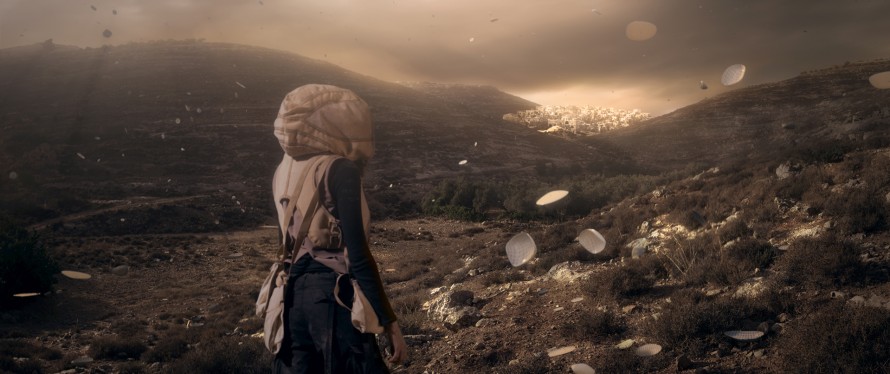
In the Future They Ate from the Finest Porcelain by Larissa Sansour and Soren Lind
I will have become
To return to Lacan once again: the futur antérieur appears frequently in the film theory of the 1970s. Is this form of the future perfect tense still useful for describing films today?
SSS: In 2016 we have a lot of science fiction which, in its furthest possible distance from the present, says substantially more about today than about the future. In the Future They Ate from the Finest Porcelain by Larissa Sansour and Soren Lind expands the futur antèriour even further: from the future perspective, a fictitious past is constructed for archaeologists. The actions are directed from tomorrow back into yesterday.
UZ: So the present will have become a different past in the future. The film revolves around a character who calls herself a “narrative terrorist”. She buries porcelain in the hope that it will be found by archaeologists in the future who will then make speculations about our present. And, via these future speculations, she seeks to change the present. The computer animated spaceships stand in landscapes upon which archive photos are also projected. Thus, various layers of time are found in the images as well as in the subject matter.
SSS: Although the spaceships are science fiction, they look utterly old-fashioned. These fantasies have been with us for so long that they prompt nostalgia. That is also a way of working through the phantasms.
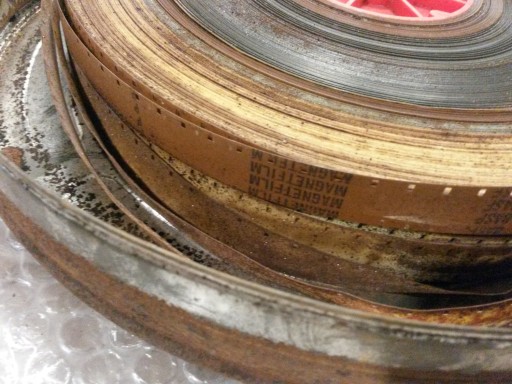
„Reclaiming History, Unveiling Moment“
The Future of the Archive
In 2016 you have again extensively addressed the archive as a subject matter. What is your understanding of time in relation to archive?
SSS: Our concept of time is precisely expressed in the title “Visionary Archives 2” under which we have brought together the events about archive in the programme. An archive is primarily associated with history and the past, “visionary”, in contrast, focuses on the future. That is our general understanding of archive: the use of archive in practice is always a projection into the past or the future.
In our curating work, we are increasingly encountering projects which deal with alleged or found archives – that is, archives which have never before been declared as such. They allow the visionary and phantasmagorical nature of every archive to be recognised more clearly.
One example is Nigeria where 300 rolls of film and audio tape had been stored in appalling conditions and have now been rediscovered. During colonial times, the British Film Institute set up a film laboratory and provided cameras to make documentaries. Parts of the resulting material were left in Nigeria by the British, others were created after they departed, because they left the equipment and lab behind. These films are completely unknown and in a condition that is close to disintegration. Which is tragic, because there is hardly any visual material from the country’s history. We are presenting this archive without having the possibility of showing any of it beforehand – it is about the presentation of an absence and about discussing the meaning of this gap in memory during the "Reclaiming History, Unveiling Memory" event.
UZ: And found historical material always has an added value. With "VHS Cyprus: A lost history" we are presenting a VHS archive of films produced on video in Cyprus in the 1980s for the local market. These films were very eagerly received by Cypriots all over the world, primarily because they contained images from home. Their value lay not so much in the stories they told as in the locations where they were filmed which the audience would recognise.
Does the particular materiality of the medium have an influence on the form of memory? For example, in something like Zakerat Abad El Shams (A Stroll Down Sunflower Lane) by Mayye Zayed?
SSS: In this case it is actually about media history, about the camera, the difference between VHS and Super-8 material and the connection to official media history – to television, music. The practices of media use by individuals and the state are being placed in relation to each other.
UZ: The grandfather in this film has an obsession with recording everything. But the filmmaker herself does not have a single picture of her grandfather, because he was always behind the camera. Zakerat Abad El Shams is an attempt to create these memories visually, that is, to construct them before they disappear. Via its techniques, the film refers to a historical moment which occurred before the production of the images.
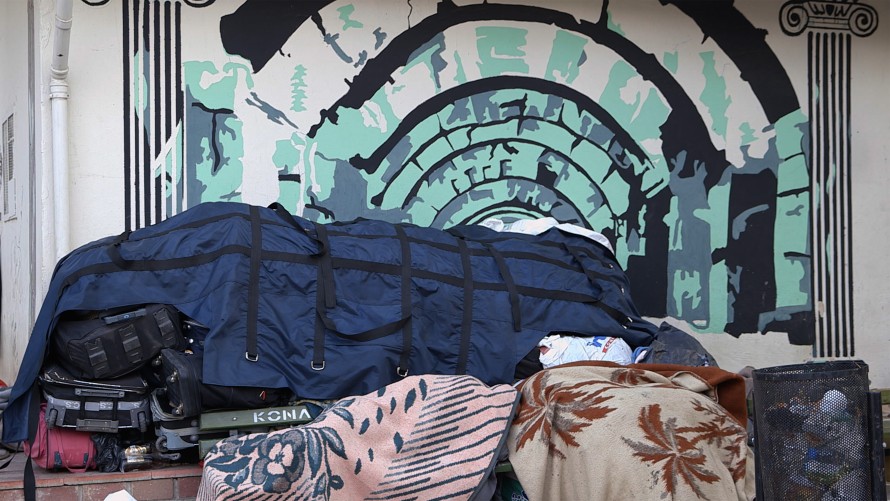
Now: End of Season by Ayman Nahle
Causes of Flight
One of the films in this year’s programme focuses explicitly on the situation of refugees: Now: End of Season by Ayman Nahle. Is this subject matter also expressed in other works?
SSS: The length of Now: End of Season by Ayman Nahle is measured by an unsuccessful phone conversation which the former Syrian President Hafiz al-Assad wants to have with Ronald Reagan. In the beginning their aids speak to each other. When the US side announces that Reagan will shortly be back from horse-riding and ready to talk, Assad comes on the line. But Reagan fails to arrive and the phone conversation does not take place. During the phone call, images are shown of the refugee situation in Istanbul today, which is above all one of waiting.
Travelling back into history and, for example, analysing the power structures between the capitalist West and the affected region helps to better understand the causes behind the refugees fleeing. We have many very powerful films in the Forum which, fully in keeping with the working through of phantasms, explore this topic in a way that, via the choice of their individual aesthetics, differs from mere representation. In Forum Expanded the topic is less explicitly in evidence although I can see almost no work in this year’s programme that is wholly divorced from it. The refugee movements are a symptom of a highly complex world situation in which we find ourselves, a geopolitical entanglement featuring a great many access points, histories and causes. I would rather locate the Forum Expanded programme here.
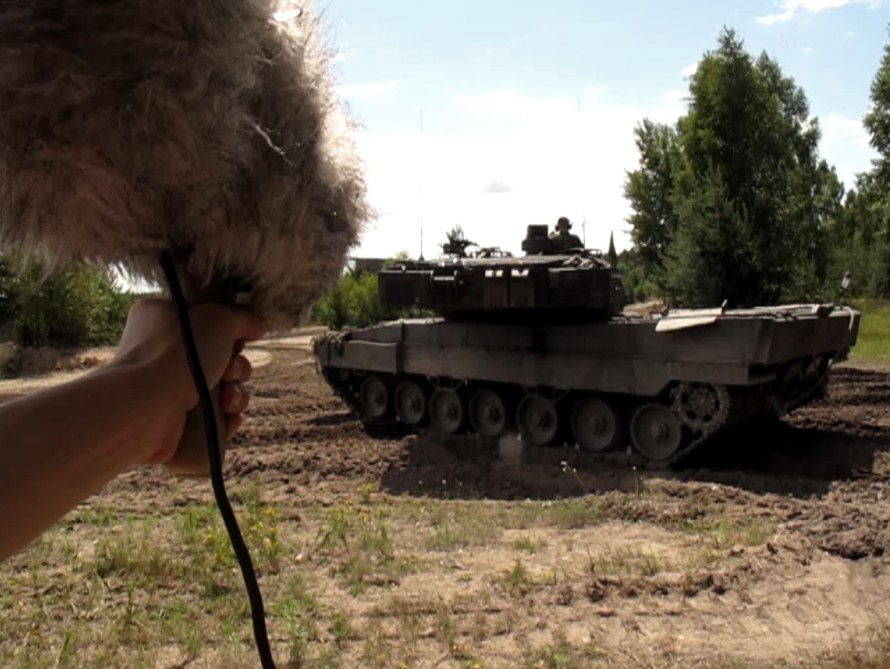
Although part of the exhibition: Pssst Leopard 2A7+ by Natascha Sadr Haghighian
What is the most unusual work this year?
SSS: We have a work without images: the installation Pssst Leopard 2A7+. The battle tank is being exported from Germany to Qatar. Natascha Sadr Haghighian has built a life-size demilitarised version which has an area made of Lego. In the middle of this area, with the diameter of the gun, circular headphone jacks have been mounted. There is something different to hear at each listening point – politicians, the news and, above all, sound works created by other artists for the project. When we discussed the work in our curatorial team, no one raised the question of missing images. It was clear to everyone that this is cinema. Pssst Leopard 2A7+ shows very clearly that some things cannot be visualised. And yet it is cinema – cinema inside the mind.
After 2013 you are once again using the silent green venue. What can visitors expect there?
SSS: Since November, the film archive of the Arsenal - Institute for Film and Video Art has been housed in silent green. In the run-up to the festival we compiled a list of analogue films from the archive which bear a relationship to the current productions in the Forum and Forum Expanded. During the Berlinale, these works can be viewed on flatbed editing tables. Here it is once again about showing what relevance an archive bears to the present. On a screen stretched between pillars in the prospective 800 square metre exhibition hall we are screening Xénogénèse by Akihiko Morishita, a work from the 1984 Forum. The artist himself is shown as a young man going round in circles. More and more scratches appear on the projected film and it looks as though Morishita is disappearing behind them. A very magical cinematic experience. But perhaps the magic is also a phantasm.